Compost from Parthenium
Compost from Parthenium
Utilization of Parthenium to make Compost
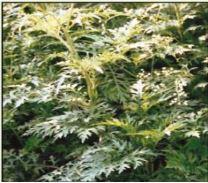 Parthenium hysteroforus commonly known as Congress grass, Carrot grass, Chatak Chandni etc. is a menace to farmland, human-beings, animals, environment and bio-diversity. About 35 million hectare of land is so infested with Parthenium. Previously it was a problem of waste and barren land but now Parthenium is a big problem in each and every crop field, orchards and even in the forest.
Parthenium hysteroforus commonly known as Congress grass, Carrot grass, Chatak Chandni etc. is a menace to farmland, human-beings, animals, environment and bio-diversity. About 35 million hectare of land is so infested with Parthenium. Previously it was a problem of waste and barren land but now Parthenium is a big problem in each and every crop field, orchards and even in the forest.
Due to continuous and large scale use of chemical fertilizers, fertility of land is decreasing gradually. Therefore, bio-fertilizer is a boon for soil health. The demand of bio-fertilizer is increasing day by day. We can make bio-fertilizer from abundantly occurred biomass of Parthenium. By making use of this weed, at one hand we can increase the productivity of our crop land by weeding out of this weed while at other hand we can even earn money by making compost on commercial basis from this waste material.
Farmers' fear about Parthenium compost
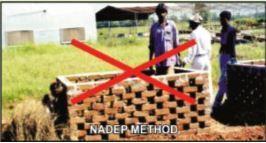 During interaction with farmers it was found that farmers think if they use compost made by Parthenium biomass, there will be more germination of this weed in their fields. Compost made by unscientific way is the reason to create confusion about the compost. During survey it was found that compost made with flowered Parthenium plants by unscientific way was creating problems in the farmer's field. Study conducted at Directorate of Weed Science Research, Jabalpur revealed that if Parthenium compost made with flowered Parthenium by NADEP or open pit or heap method contained more numbers of viable seeds of Parthenium. In a study it was found that 350-500 Parthenium seeds can germinate from 300gram compost made by NADEP or open pit method. Compost made by scientific way is safe and does not have viable seeds hence good for soil health and crop productivity.
During interaction with farmers it was found that farmers think if they use compost made by Parthenium biomass, there will be more germination of this weed in their fields. Compost made by unscientific way is the reason to create confusion about the compost. During survey it was found that compost made with flowered Parthenium plants by unscientific way was creating problems in the farmer's field. Study conducted at Directorate of Weed Science Research, Jabalpur revealed that if Parthenium compost made with flowered Parthenium by NADEP or open pit or heap method contained more numbers of viable seeds of Parthenium. In a study it was found that 350-500 Parthenium seeds can germinate from 300gram compost made by NADEP or open pit method. Compost made by scientific way is safe and does not have viable seeds hence good for soil health and crop productivity.
Method to make compost from Parthenium
It is always recommended by the scientists to collect the parthenium biomass before flowering for making compost || either by NADEP or open pit method. But it is not practically possible to collect only flowerless plants as all the stages of Parthenium are available at any time due to non-dormancy of seeds which may germinate on the availability of water. Therefore, farmers are bound to uproot every stage of Parthenium during weeding in their fields. Following procedure can be followed for making Parthenium compost:
- Make a pit of 3x 6x10feet (depth x width x length) at a | place where water dose not stagnate. Pit size can be increased or decreased but depth cannot be compromised.
- If possible, cover the surface and sidewalls of the pit with stone chips. It will protect absorption of essential nutrient of compost by the soil surface.
- If stone cheep are not available, make soil surface compact.
- Arrange about 100 kg dung, 10 kg urea or rock phosphate, soil (1-2 Quintals) and one drum of water near the pit.
- Collect all the Parthenium plants from your field and nearby area.
- Spread about 50 kg of Parthenium on the surface of pit.
- Over this sprinkle 500 gm urea or 3 kg rock phosphate.
- If possible add Trichoderma viridi or Trichoderma harziana (kind of fungi cultured powder) in the amount of 50 gm per layer.
- All the above constituents will make one layer.
- Like first layer make several layers till the pit is filled upto 1 fit high from the ground surface.
- Fill the pit in dome shape.
- While making layers, apply pressure by feet to make weed biomass compact.
- If there is no soil with Parthenium roots than add 1012kg of loamy soil on each layer.
- When pit is full with above described layers then cover it with mixture of cow dung, soil and husk.
- After 4-5 months we can get well decomposed compost.
- We can get 37–45% of compost from 37-42 quintals of Parthenium biomass.
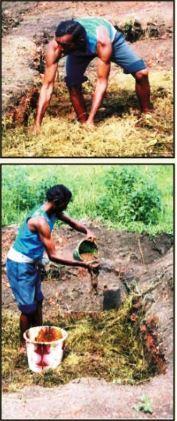
Sieving of compost
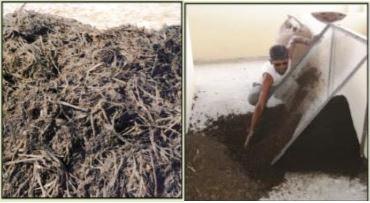 After removal of compost from pit we may find some stems which give impression that Parthenium plants have not so been decomposed yet. But actually it is well decomposed. Spread that compost in the shady place to dry it. Coming in contact with air, soon wet of compost becomes dry and crumpled. Make a heap of this so dry compost. If still thick pieces of Parthenium stems are seen in the compost, beat them with the sticks. Sieve that compost with 2x2cm size mesh. For selling point of view, make packets of 1, 2, 3, 5 kg for kitchen garden and 25-50 kg for crops and horticulture.
After removal of compost from pit we may find some stems which give impression that Parthenium plants have not so been decomposed yet. But actually it is well decomposed. Spread that compost in the shady place to dry it. Coming in contact with air, soon wet of compost becomes dry and crumpled. Make a heap of this so dry compost. If still thick pieces of Parthenium stems are seen in the compost, beat them with the sticks. Sieve that compost with 2x2cm size mesh. For selling point of view, make packets of 1, 2, 3, 5 kg for kitchen garden and 25-50 kg for crops and horticulture.
Nutrient composition in Parthenium compost Benefits
In a comparative study, it was found that in Parthenium compost nutrients were twice more than that of ordinary compost and all most equal to vermin compost.
| Type of Bio - Fertilizers | Nutrients(%) | ||||
| N | P | K | Ca | Mg | |
| Parthenium Compost | 1.05 | 0.84 | 1.11 | 0.9 | 0.55 |
| Vermi compost | 1.61 | 0.68 | 1.31 | 0.65 | 0.43 |
| Farm yard Manure | 0.45 | 0.3 | 0.54 | 0.59 | 0.28 |
Precautions
During Parthenium compost preparation there is need Of following attentions:
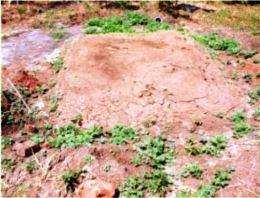 Pit should be in open and shady upland.
Pit should be in open and shady upland.- Cover the pit with the mixture of soil, dung and husk
- If you find fresh germination of Parthenium near the pit where weed was collected to fill up the pit, destroy them otherwise they may contaminate the compost after flowering.
- Check the moisture level of compost. If there is dryness in the pit, make a few holes and pour water in the pit and close the holes.
- During the process, the temperature rises 60-70 °C due to which seeds are killed.
- While it may take about four to five months to prepare the compost in a warm climate, in cold regions it can take more time.
Benefits
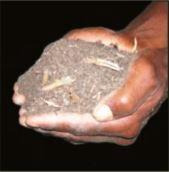 Parthenium compost is a type of bio- fertilizer which has no harmful effects on crops, human – beings and environment.
Parthenium compost is a type of bio- fertilizer which has no harmful effects on crops, human – beings and environment.- Parthenin, a poisonous chemical of Parthenium is fully degraded during the formation of compost.
- Parthenium compost is a balanced bio fertilizer which has more nitrogen, phosphorous, potash than that of farm yard manure. Some essential Manure micronutrients are also present in it.
- Parthenium compost is an eco-friendly bio fertilizer that can be made by low cost inputs and application of it in crop fields will increase the fertility of soil.
Amount for use
- During basal dressing of the field, apply 2.5-3.0 tone/hectare.
- In plantation of vegetables crop apply 4-5 tone/hectare.
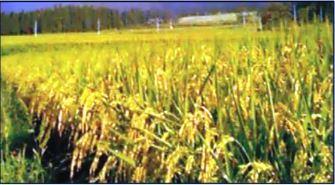
Source: Directorate of Weed Research
Last Modified : 3/1/2020
This topic provides information related to Agri Ex...
This topic provides information related to the Bha...
This topic covers information about production of ...
This topic provides information about Bhoomi Rashi...
